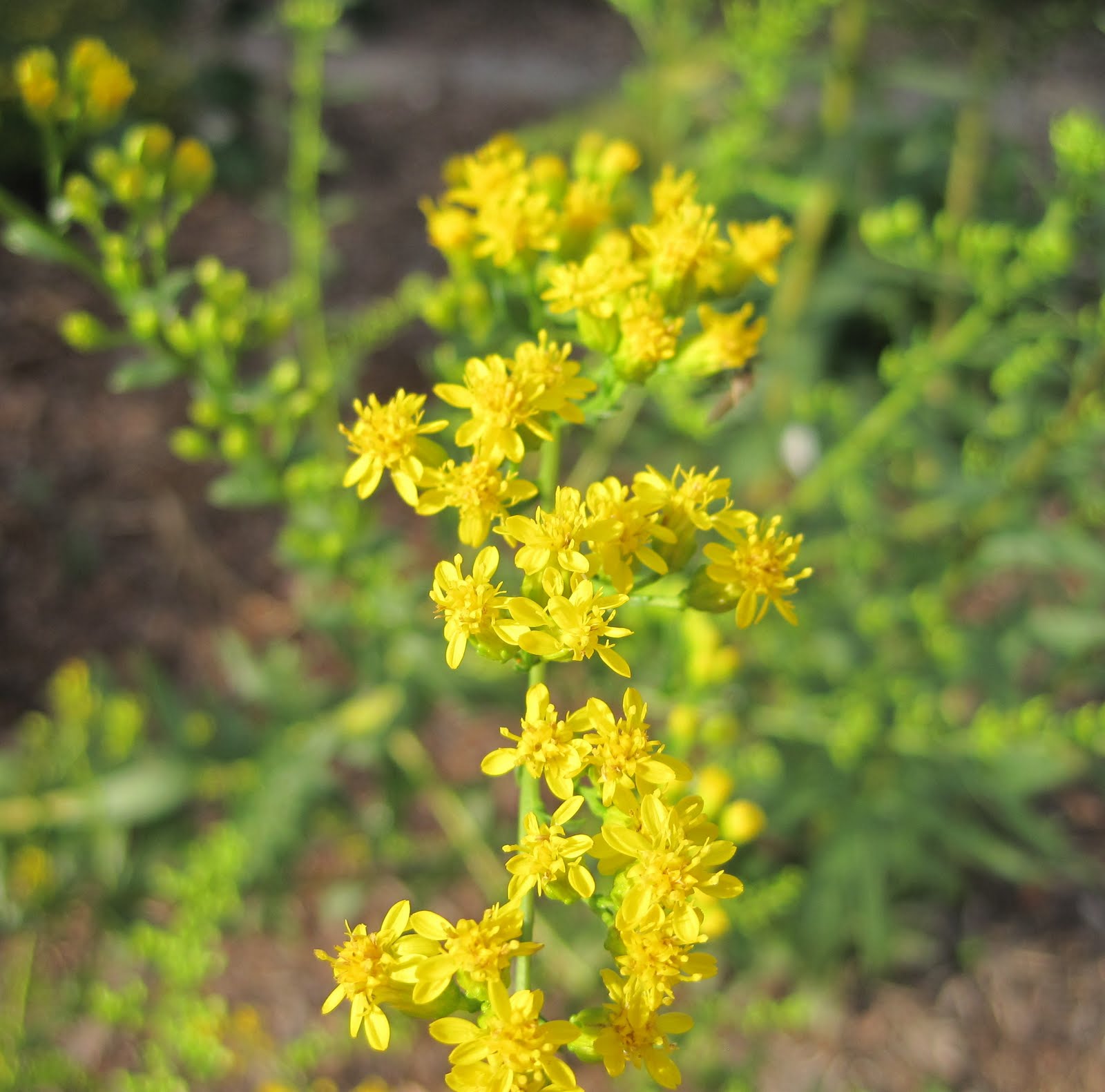
“May all your weeds be wildflowers” is a charming sentiment.
I hope this is true in my garden. I hope that the weeds that grow and bloom there are pretty enough for someone to say “how lovely” instead of “doesn’t she ever weed”.
There are blooms in my garden, such as the rare Short’s goldenrod, Solidago shortii, that someone might wonder about, if they hadn’t been brought up to speed on the beauty of this flower in the late summer garden.
When I see goldenrod blooming, for that manner, when I see any native wildflowers blooming, I think of the book The Brother Gardeners: Botany, Empire and the Birth of an Obsession by Andrea Wulf.
Wulf tells the stories of gardeners and botanists who shipped plants from the New World back to England where eager gardeners and botanists could hardly wait to get their hands on these strange, new plants that they had never seen before. It’s a good book, based on the lives of John Bartram, Carl Linneaus and others who shaped gardening not only in England but also in the United States.
Back then, in the eighteenth century, they most certainly did not view goldenrod as some common roadside weed. There were no roadsides. Nor did they likely mistake it for the cause of the hay fever that overcomes so many people in the fall. Blame ragweed for that. Instead, maybe they saw a beautiful spray of tiny gold flowers, attracting numerous insects and practically sparkling in the sun.
I’ve heard that many British gardeners love goldenrod and I’ve heard rumors that it is gaining in popularity here in the United States as a cultivated garden plant.
Perhaps a touch of goldenrod is growing in your garden now, as it is in mine, all sparkly and gold and fresh looking amongst flowers and plants that have seen better days and better summers. If it is, whether as a weed or as something you planted on purpose, I hope you are enjoying it.
And on this Wildflower Wednesday, hosted once a month by Gail at Clay and Limestone…
May all your weeds be wildflowers, or at least blend in nicely with the rest of your garden.


Hello Carol! I hve goldenrods blooming in a corner of my garden. I keep it in check. The flowers are great for flower arrangements.
Hi Carol, what a sweet and timely post! Thanks for that book recommendation, it sounds very interesting. We love goldenrod here, having pioneers that were here when this Fairegarden began and purchased named varieties including Golden Fleece. In my wildlife federation leaflet it states that goldenrod is the number one wildlife friendly plant, over all others. A very good reason to grow it. 🙂
Frances
Carol, very nice to see you and your blog…..please keep it up…….May your weeds be wild flowers (amen!)……..nice day 🙂
Goldenrod is a keeper here. I like the sounds of that book too.
Carol – I like the way wildflowers 'extend' my garden to the field and roadside – of which I have plenty. I also recommend Andrea Wulf's book which is absolutely fascinating about the personalities and rivalries of those early gardeners. I am looking forward to her new book The Founding Gardeners: The Revolutionary Generation which will be out next April.
There is beauty in the arching flowers of goldenrod. I have always liked it. It is one durable plant.
Goldenrod is one spectacular beauty and is covered with bees, wasps, small critters I can barely id, caterpillars and butterflies until frost. I appreciate the Europeans for ratcheting up the popularity of our humblest beauties. Thanks for joining the celebration, I love this post! gail
I have never had a problem with goldenrod at all. Love it. Though–are there not some non-native varieties? Someone told me that.
Nice post! I've always found it ironic that Europeans have been the ones to see the beauty and potential of our native flowers (goldenrod, heleniums, etc). I guess it's a case of us taking things for granted…but boy, are we all reaping the rewards now, with all these "new" plants appearing on more and more nursery shelves!
A lovely sentiment, and yes, I have goldenrod, too, blooming all over the place. It's one weed, er, wildflower, I don't cut down. Enjoyed the info about European gardeners, and the book sounds fascinating. I love history, and what could be better than history combined with gardening!
I have some goldenrod Solidago canadensis in my garden too. I love the golden colour. Thanks for sharing today.
I love goldenrod – it should be the national flower instead of the rose. Some of them are hard to keep in check, but some are gems of the fall garden. I have 2 cultivars, the large 'Fireworks' and the small 'Dansolitlem' Little Lemon. They are the perfect companion to the ex-Asters.
I have three varieties of Goldrod in the garden, they are a staple for the late summer early fall. The pollinators need to eat.
Goldenrod is blooming in Western New York. As you would expect, along the roadsides, but also at the Niagara Falls State Park. The park is much more naturalistic than in Canada, and has trails lined with goldenrod. What a pretty site.
I always love goldenrod, such a sign of the changing season and the melancholy of fall coming…..already?
But I still love it.
Now we have a whole lawn of a real weed, and it's way too much work to clear without a lawnmower…spotted thistle, Centaurea maculosa, and yet when the light is just right and you see the finches landing on the purple flowers it's a beautiful sight.
Sometimes you just have to love what you have!